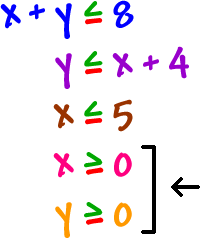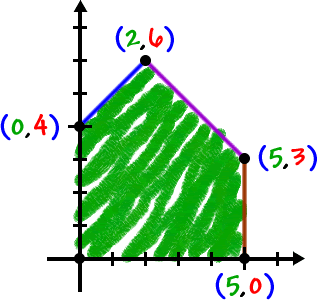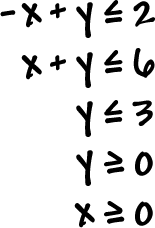Here's one that's more complicated:
 |
Sure, it looks like a lot... But, just take each line one at a time!
This combo means that we are in the first quadrant:
|
So, we just need to concentrate on that...
Here's the shaded area:
*You should graph all this on your own on a separate piece of
paper for the practice!

All the points of intersection need to be checked:
| (0, 4) should be where
intersect... Does the point work? |
(2, 6) should be where
intersect... Does the point work? |
| (5, 3) should be where
intersect... Does the point work? |
(5, 0) should be where
intersect... This one obviously works! |
YOUR TURN:





